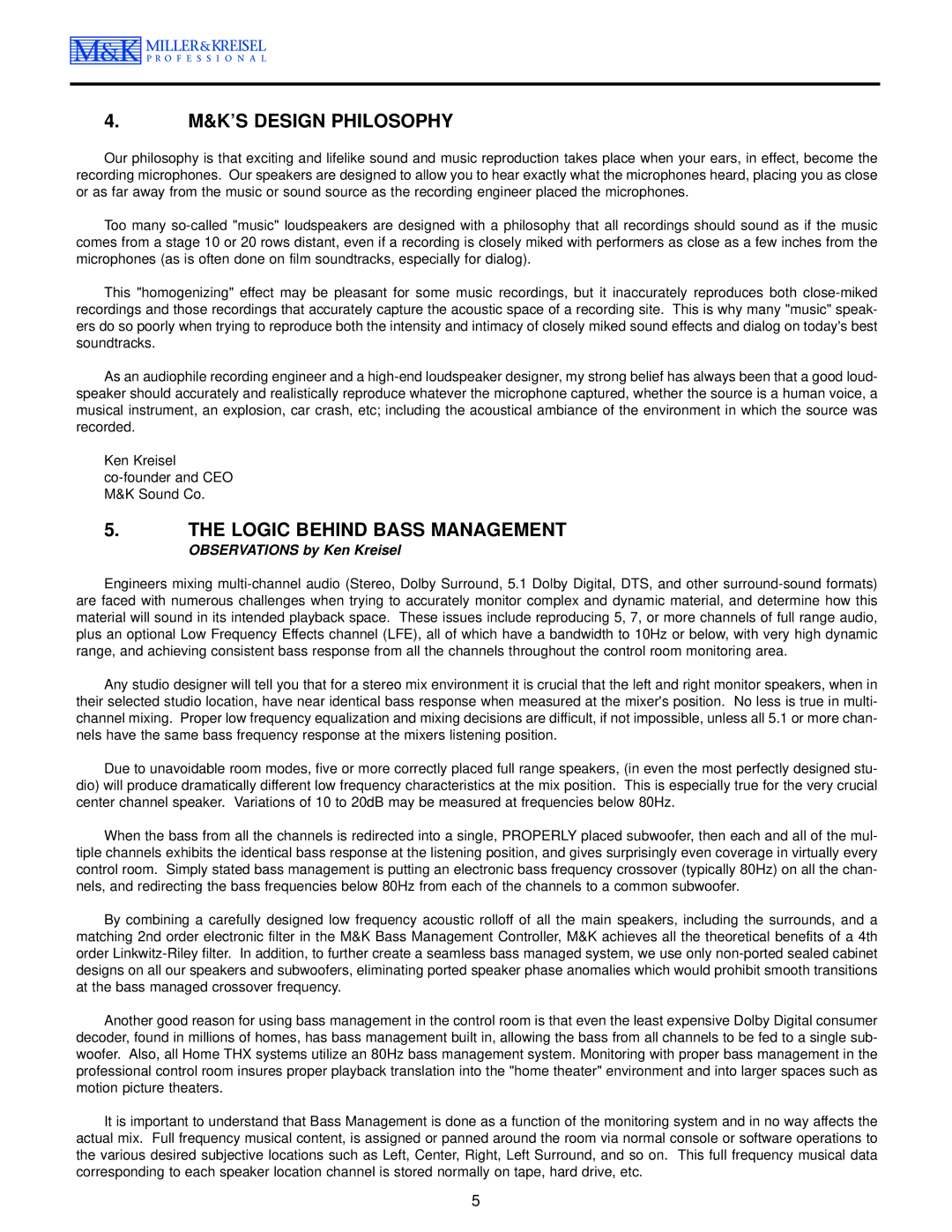4.M&K’S DESIGN PHILOSOPHY
Our philosophy is that exciting and lifelike sound and music reproduction takes place when your ears, in effect, become the recording microphones. Our speakers are designed to allow you to hear exactly what the microphones heard, placing you as close or as far away from the music or sound source as the recording engineer placed the microphones.
Too many
This "homogenizing" effect may be pleasant for some music recordings, but it inaccurately reproduces both
As an audiophile recording engineer and a
Ken Kreisel
5.THE LOGIC BEHIND BASS MANAGEMENT
OBSERVATIONS by Ken Kreisel
Engineers mixing
Any studio designer will tell you that for a stereo mix environment it is crucial that the left and right monitor speakers, when in their selected studio location, have near identical bass response when measured at the mixer's position. No less is true in multi- channel mixing. Proper low frequency equalization and mixing decisions are difficult, if not impossible, unless all 5.1 or more chan- nels have the same bass frequency response at the mixers listening position.
Due to unavoidable room modes, five or more correctly placed full range speakers, (in even the most perfectly designed stu- dio) will produce dramatically different low frequency characteristics at the mix position. This is especially true for the very crucial center channel speaker. Variations of 10 to 20dB may be measured at frequencies below 80Hz.
When the bass from all the channels is redirected into a single, PROPERLY placed subwoofer, then each and all of the mul- tiple channels exhibits the identical bass response at the listening position, and gives surprisingly even coverage in virtually every control room. Simply stated bass management is putting an electronic bass frequency crossover (typically 80Hz) on all the chan- nels, and redirecting the bass frequencies below 80Hz from each of the channels to a common subwoofer.
By combining a carefully designed low frequency acoustic rolloff of all the main speakers, including the surrounds, and a matching 2nd order electronic filter in the M&K Bass Management Controller, M&K achieves all the theoretical benefits of a 4th order
Another good reason for using bass management in the control room is that even the least expensive Dolby Digital consumer decoder, found in millions of homes, has bass management built in, allowing the bass from all channels to be fed to a single sub- woofer. Also, all Home THX systems utilize an 80Hz bass management system. Monitoring with proper bass management in the professional control room insures proper playback translation into the "home theater" environment and into larger spaces such as motion picture theaters.
It is important to understand that Bass Management is done as a function of the monitoring system and in no way affects the actual mix. Full frequency musical content, is assigned or panned around the room via normal console or software operations to the various desired subjective locations such as Left, Center, Right, Left Surround, and so on. This full frequency musical data corresponding to each speaker location channel is stored normally on tape, hard drive, etc.
5
